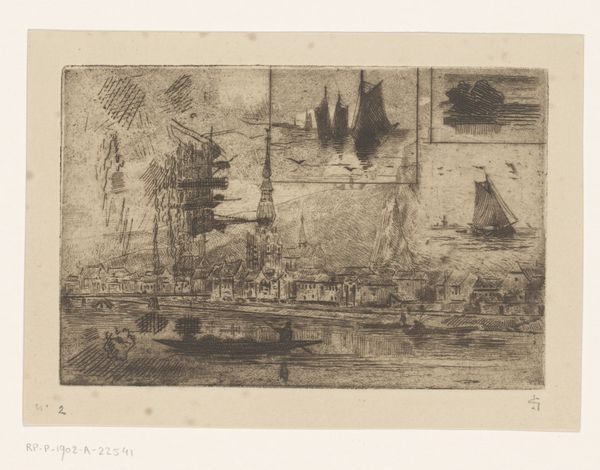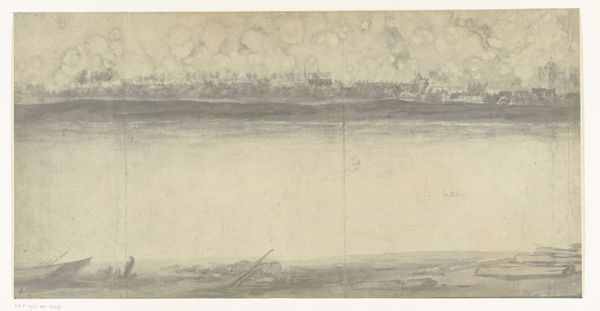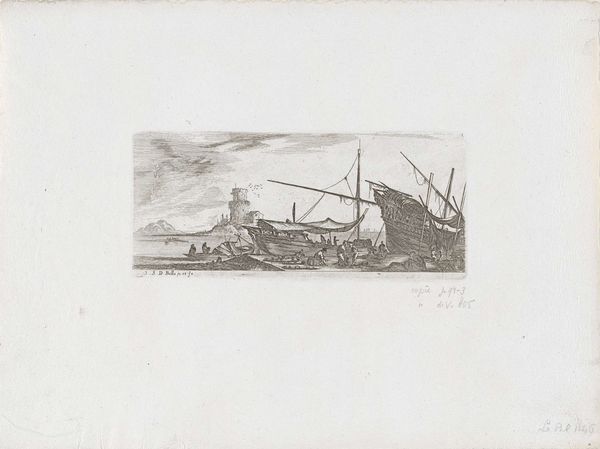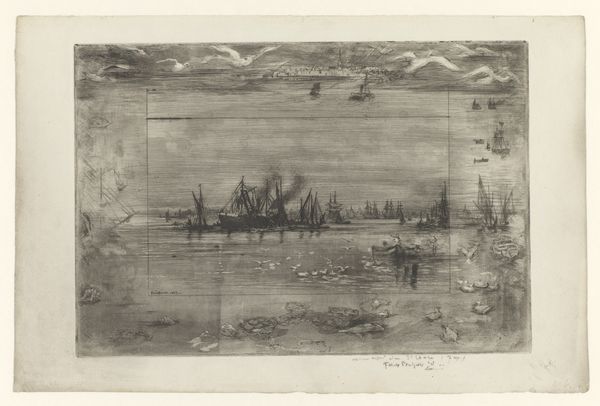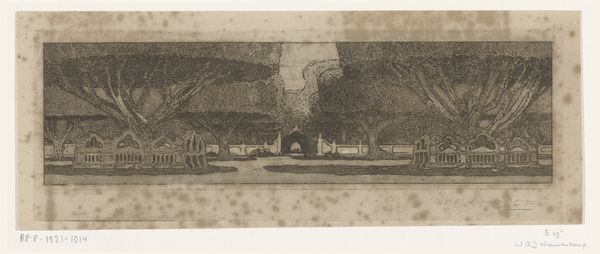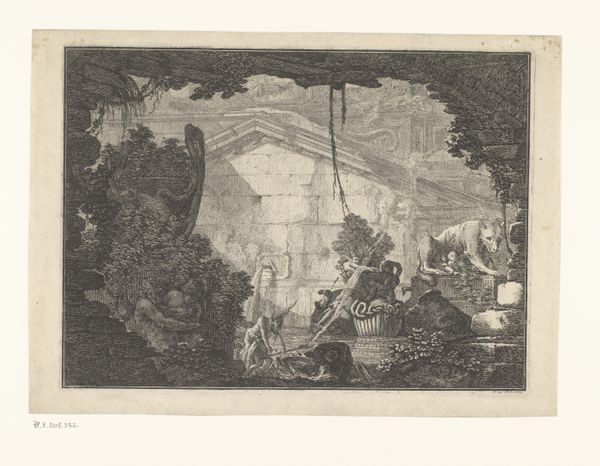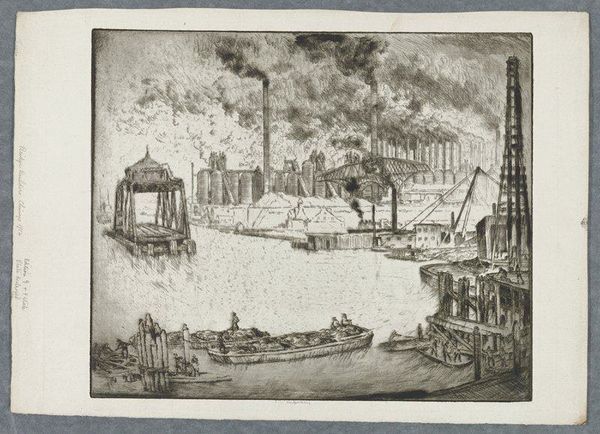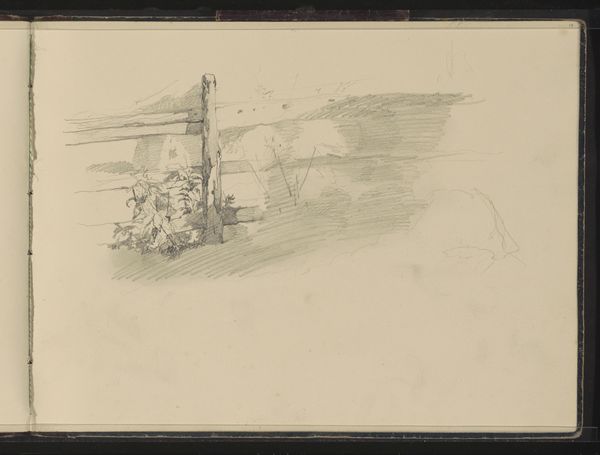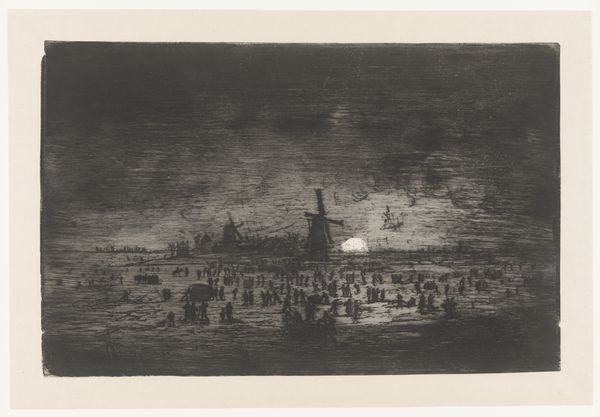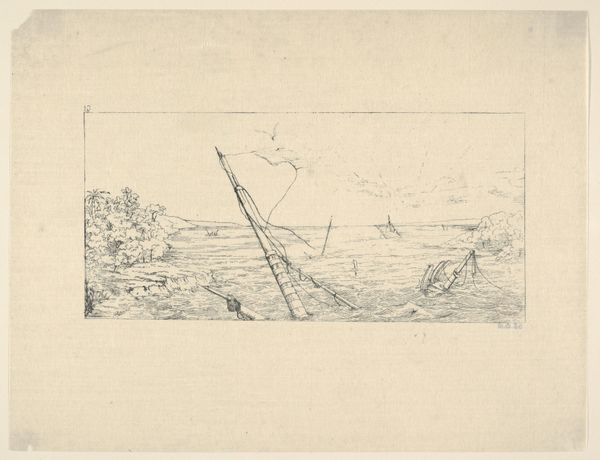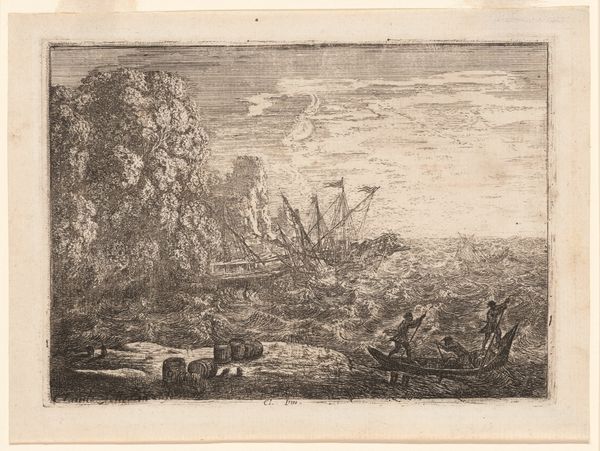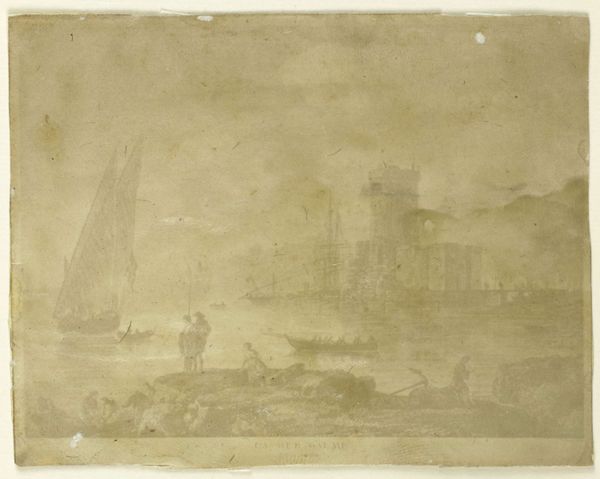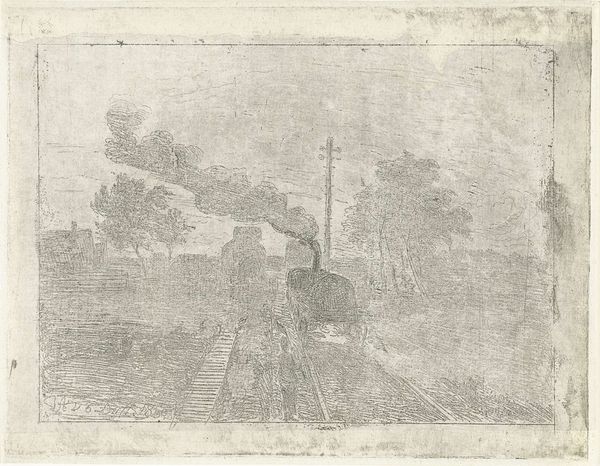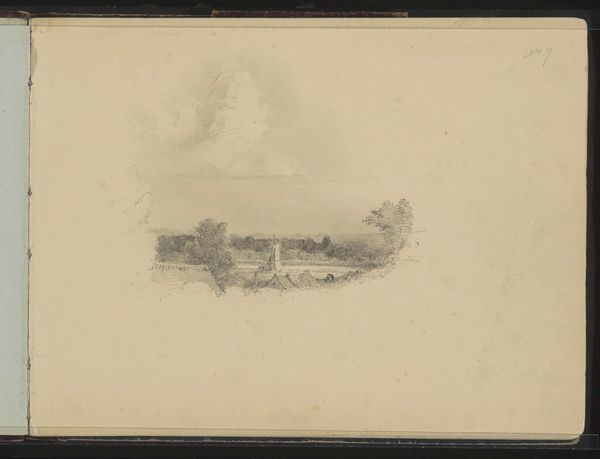
drawing, mixed-media, watercolor
#
drawing
#
mixed-media
#
water colours
#
ink painting
#
landscape
#
watercolor
#
romanticism
#
cityscape
#
mixed medium
Dimensions: height 433 mm, width 530 mm
Copyright: Rijks Museum: Open Domain
Curator: What strikes me immediately about this mixed-media drawing is its somber mood, a kind of industrial melancholy, would you agree? Editor: Absolutely. "Kolenfabrieken te Königshütte," made sometime between 1840 and 1860, offers a perspective on the evolving landscapes of industrial Europe, seen here from a human-scaled viewpoint. Curator: The twin figures with their dog seem to stand at a crossroads, geographically and perhaps psychologically. We are presented with something akin to a scene in purgatory: they seem neither able to enjoy the brown landscape around them nor cross over to the kingdom of production with all those imposing, almost gothic, chimneys. Editor: This romantic portrayal almost elegizes the advent of heavy industry and invites discussion about our fraught relationship with technological "progress." Consider also Königshütte, an industrial city in Upper Silesia. During this period, the area experienced intense social upheaval amidst Prussian expansion and Polish nationalism. This artwork serves as documentation, if you will, that also encapsulates anxieties born of rapid transformation. Curator: Notice the calculated composition, the way the chimneys almost resemble gothic cathedral spires. Here is, arguably, the new church, a site for new rituals and concerns and beliefs, where coal smoke is, in effect, a type of incense rising up into a leaden sky. Editor: Right, it's crucial to address how industrialization impacts communities and lived experiences. We can use an image like this to encourage audiences to critically examine who benefits from such transformations, and at what cost. Here, Romanticism veers toward realism and documents ecological, human-scaled trauma. Curator: Do you suppose, however, the symbolism could also be ambivalent? It seems also possible that such romantic approaches to rendering smoke rising from stacks also communicates hope? This piece suggests much but resolves nothing. Editor: True. Art from this era grapples with complicated subjects that still reverberate today. Perhaps our task is not necessarily to "resolve" anything but to foster sustained reflection through it. Curator: Precisely, the unresolved elements ensure this landscape speaks powerfully across time, allowing space for endless discussion. Editor: Indeed, providing context allows us to reframe older conversations while posing contemporary queries.
Comments
No comments
Be the first to comment and join the conversation on the ultimate creative platform.
